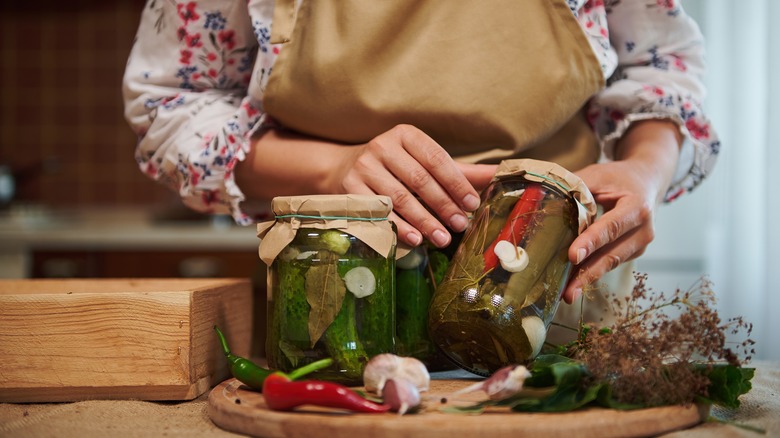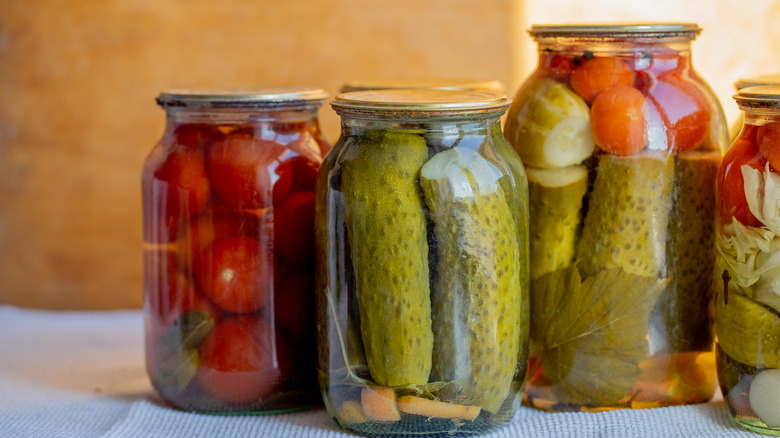The Simple Method To Improve The Texture Of Home-Canned Pickles
Onomatopoeia was made for the slurping of soups, the cracking of eggs, and the crunching of pickles. Homemade pickles, ideally. That crisp crunch is so very important to a proper pickle (no one ever asks for a floppy one), so you ought to know how to preserve that all-important snap when whipping up your next batch.
Typically, making pickles is hassle-free. All you have to do is make your brine, add your spices, fiddle with the recipe a few times, leave a few cut cucumbers in a jar with the brine, wait a little bit, and voilà! But there are a few things you can look for even before the pickle-making starts that will ensure a crunch. First, according to A Farm Girl in the Making, you want to make sure you're picking cucumbers that are younger, smaller, and actually bred for pickling. The smaller and younger they are, the better they'll hold their shape and texture, and specific breeds of cucumber will really let your brine shine, Taste of Home notes.
Pickling your heart out
Once you've chosen the right cucumbers and your brine is just right, there are still a few more things to do before the pickling process itself. According to The Prairie Homestead, soaking the cucumbers in ice-cold water for several hours and cutting off the ends before stuffing them into the jar will also help to keep them hardy.
According to the National Center for Home Food Preservation, it's also a good idea to process your cucumbers for about 30 minutes in 180°F water, which will help keep them firm and prevent spoilage of the vegetables and the brine. Remember, the texture is going to be of the utmost importance, and when serving your home-pickled cucumbers, the last thing you want to show for it is a floppy pickle. Keep your guests perky and their mouths occupied by taking just a few extra steps before preserving these tasty vegetables.

